
Characterization of Mississippian Osage Chat in South-Central
Kansas
Kansas Geological Survey
Open-file Report 2002-50

|
|
Kansas Geological Survey Open-file Report 2002-50 |
The Aetna Field produces natural gas from a thick section of
the Cowley Facies with distinct reservoir characteristics such
as a mixture of limestone,chert, dolomite and shale; a near constant
resistivity of about 8 ohms-m; a low porosity of 8.5-14 percent;
and little to no matrix permeability. The bulk volume water varies
from 0.6-1.0, which indicates that there is little to no movable
water. Large frac treatments are required to establish economic
production, since matrix permeability is so low.
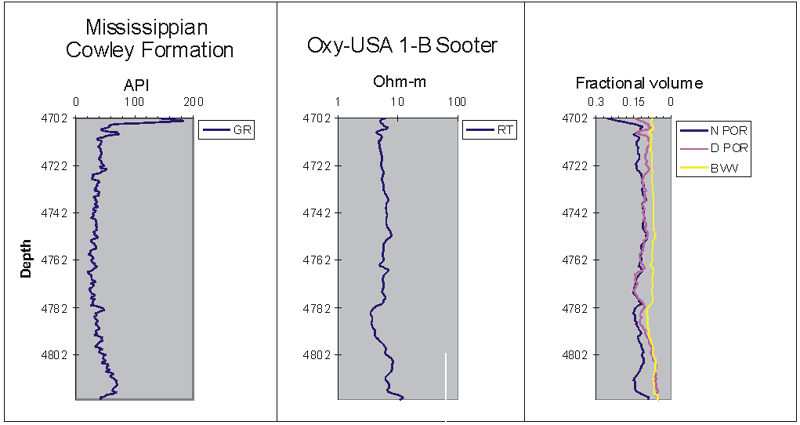
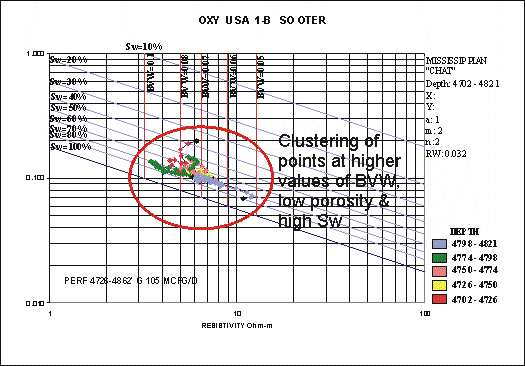

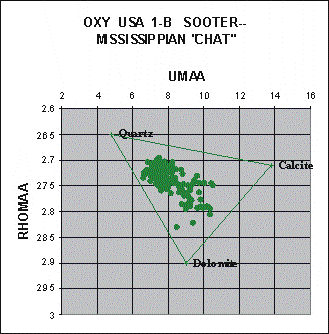
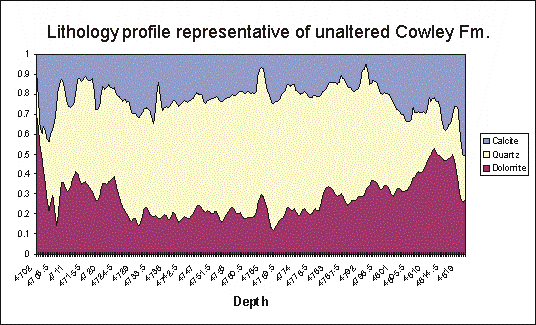
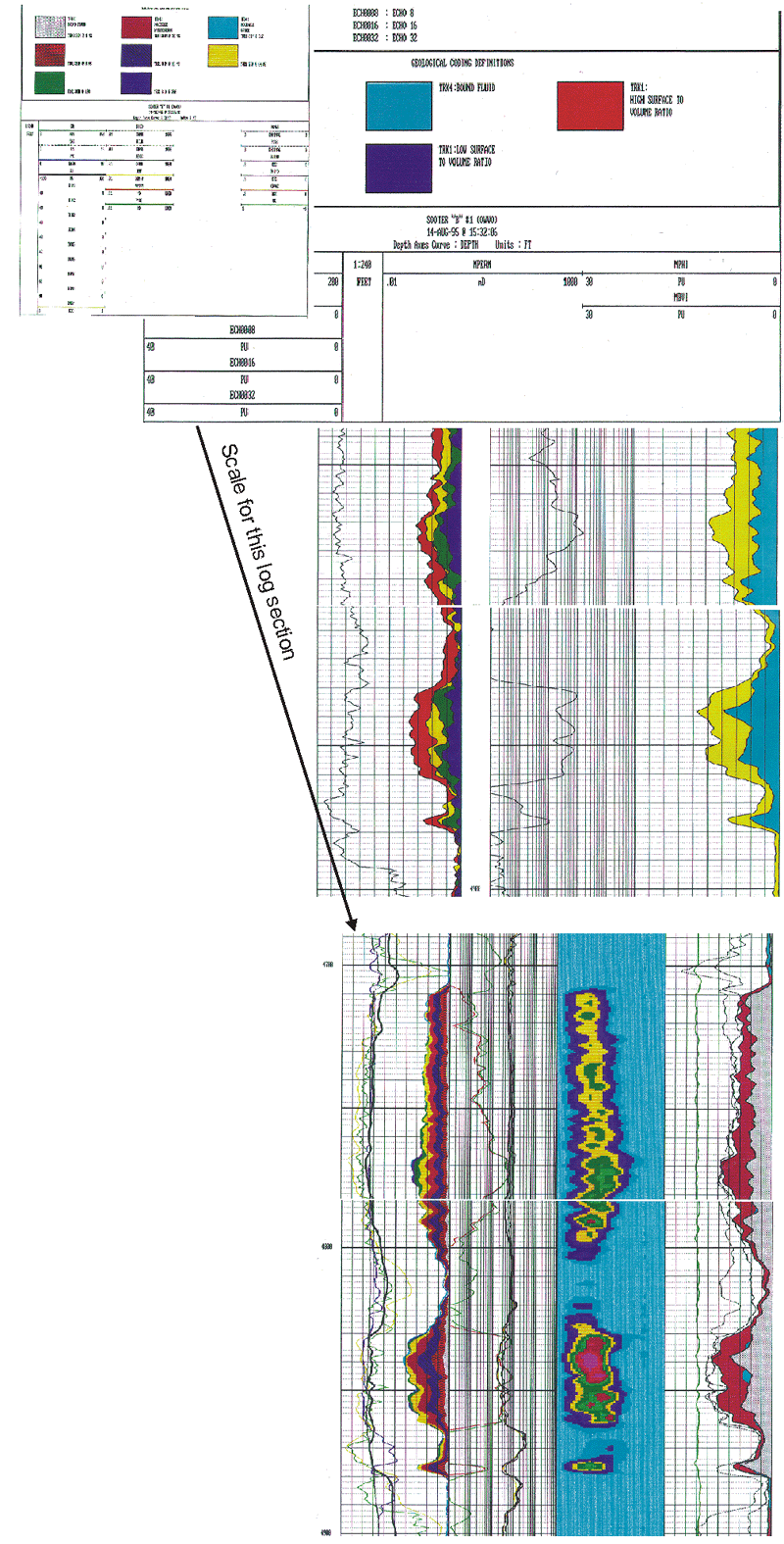
The NMR log analysis confirms the normal log suite analysis
as well as adding additional reservoir characteristics. Porosity
values by the NMR log are slightly less than those determinedd
by a density-neutron
cross plot. The irreducible bulk volume water saturation (MBVi)
as determined by the NMR log varies from 4-7 percent. The free
fluid index indicates 3-8 percent hydrocarbon.
Lies west of Hardtner Field on the west flank of the Pratt Anticline along a separate structural block with an orientation perpendicular to Hardtner Field; Farthest field down the southwestern flank of the Pratt Anticline and represents the southern limit of chat fields
Boundaries of Aetna Gas Area are not well defined due to the marginal reservoir properties of the matrix; Classified as a chat field, but produces from a mixture of chert, limestone, and dolomite which are lithologies representative of unaltered Cowley Formation; Reservoir is relatively clean with little shale, but silicification is not as significant as in the those fields with chat pay such as the nearby Hardtner Field.
Produces from cherty carbonate as the result of induced and probably natural fractures since matrix permeability is negligible. Level of alteration is reduced at this location, perhaps due to lack of thick beds of chert, less local structural deformation, or less subaerial exposure.
|
|